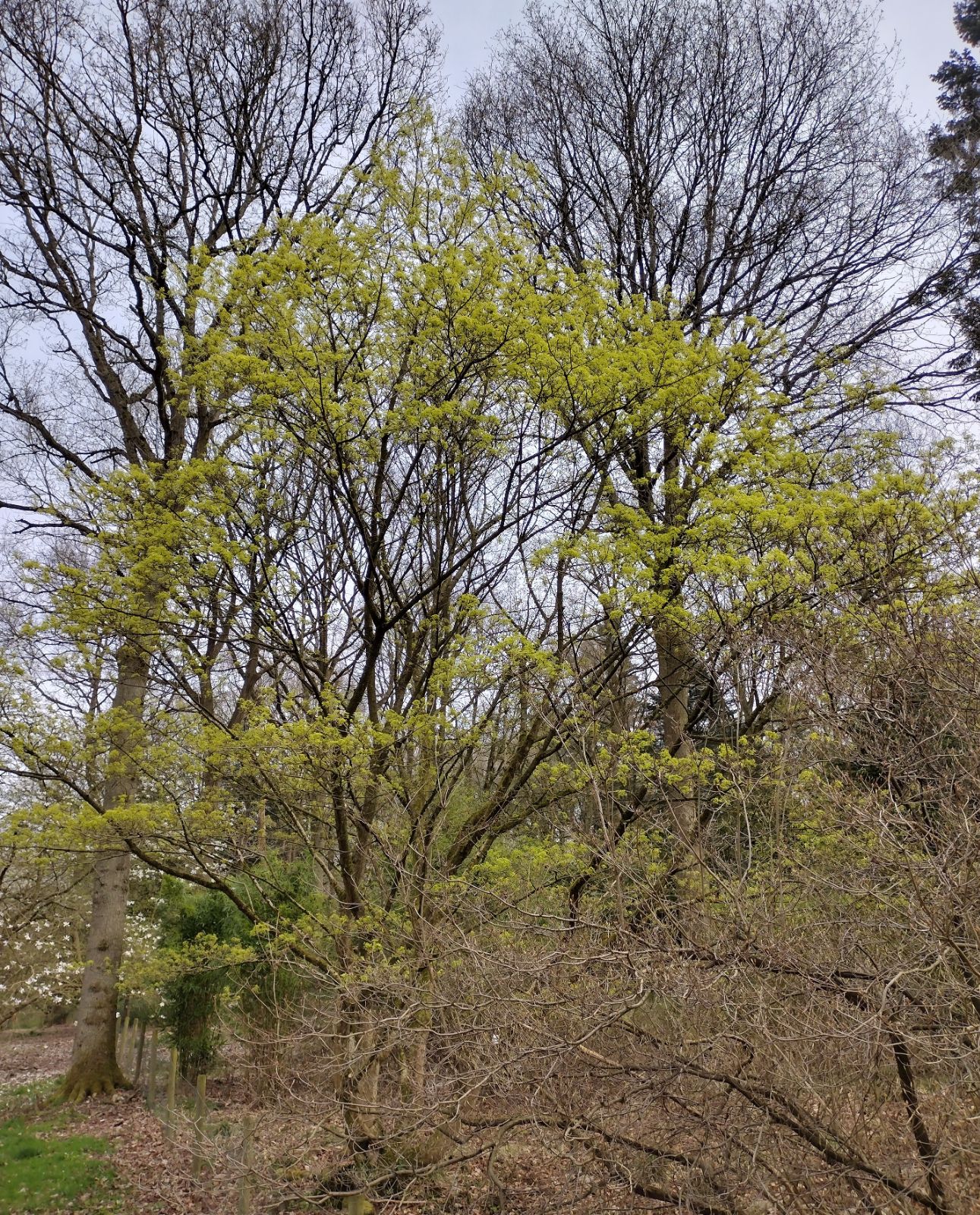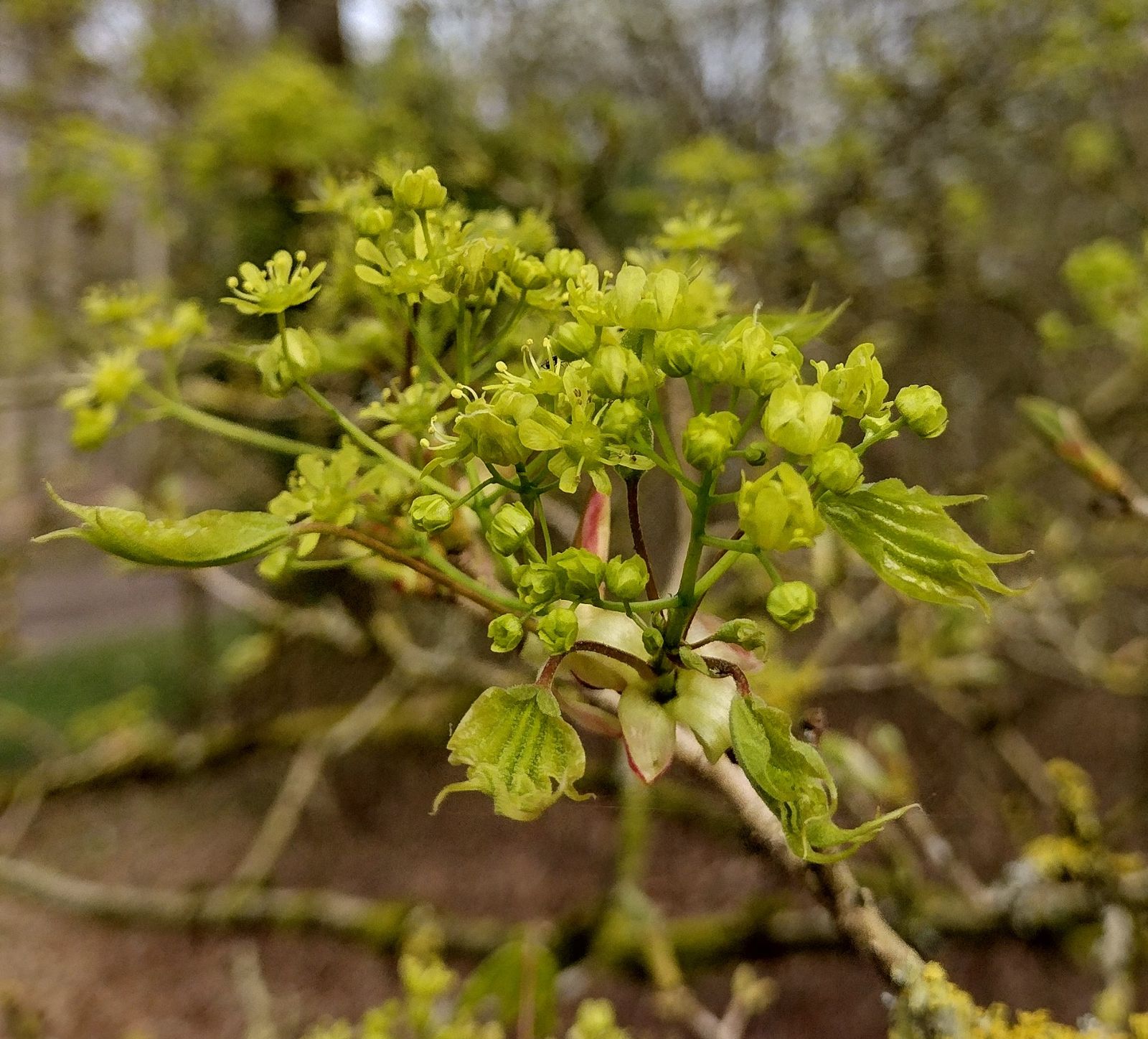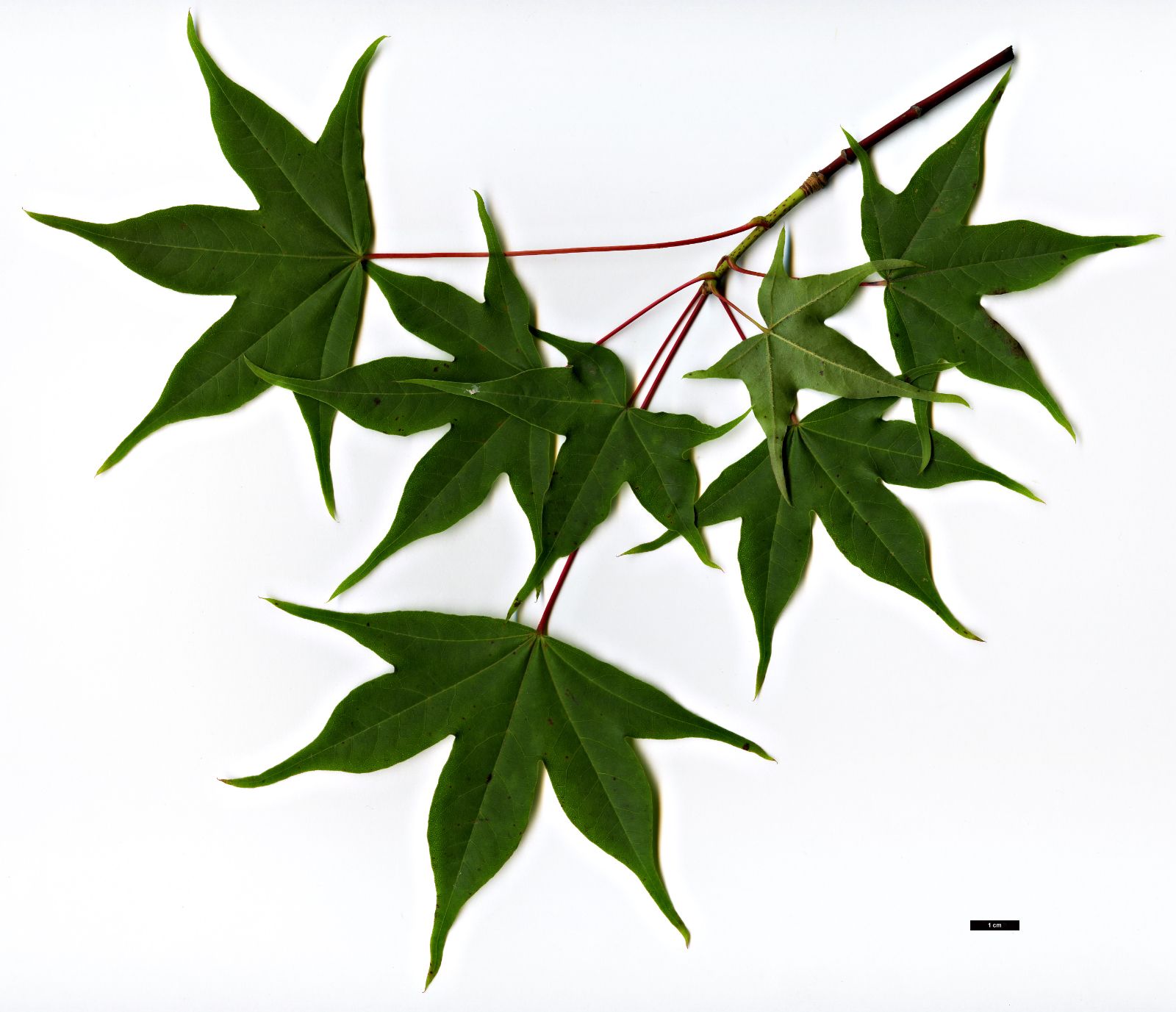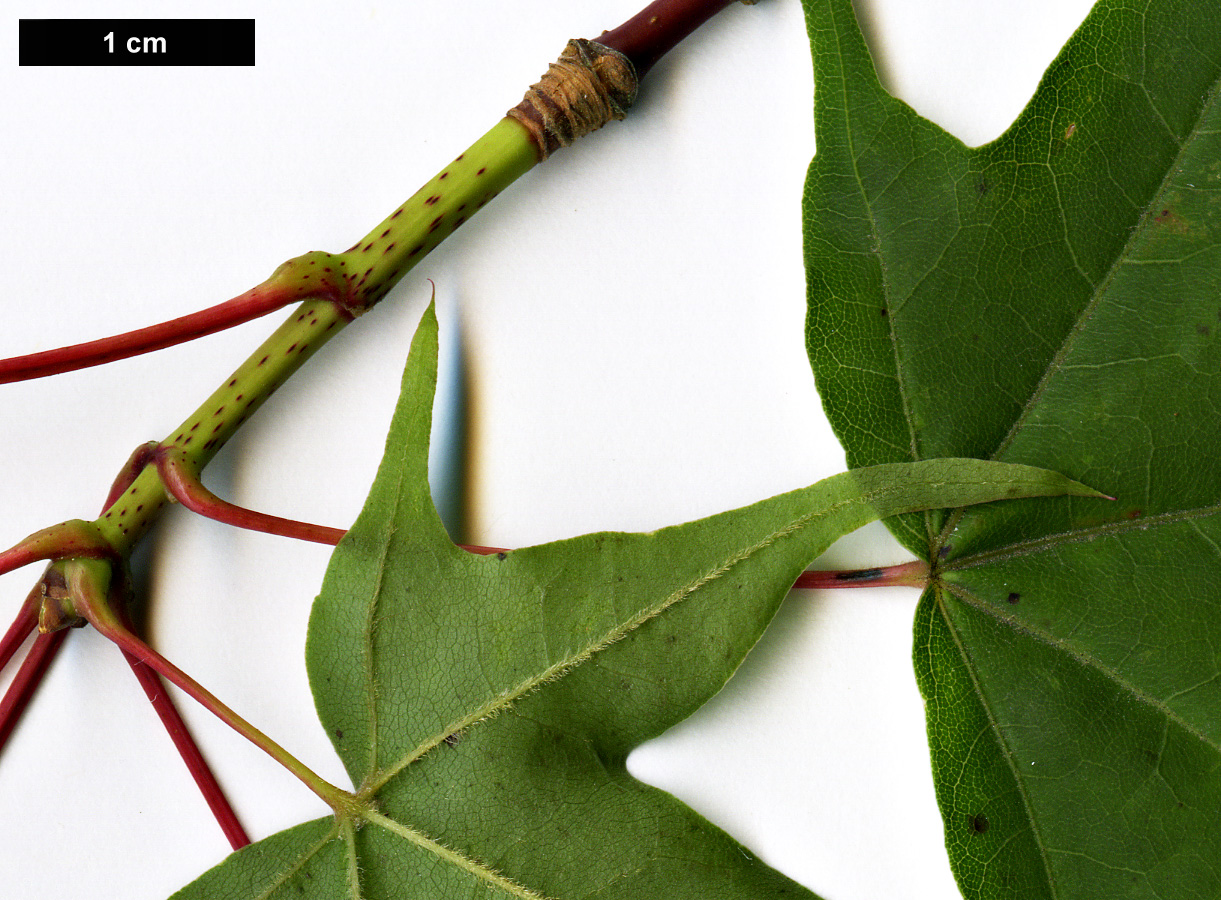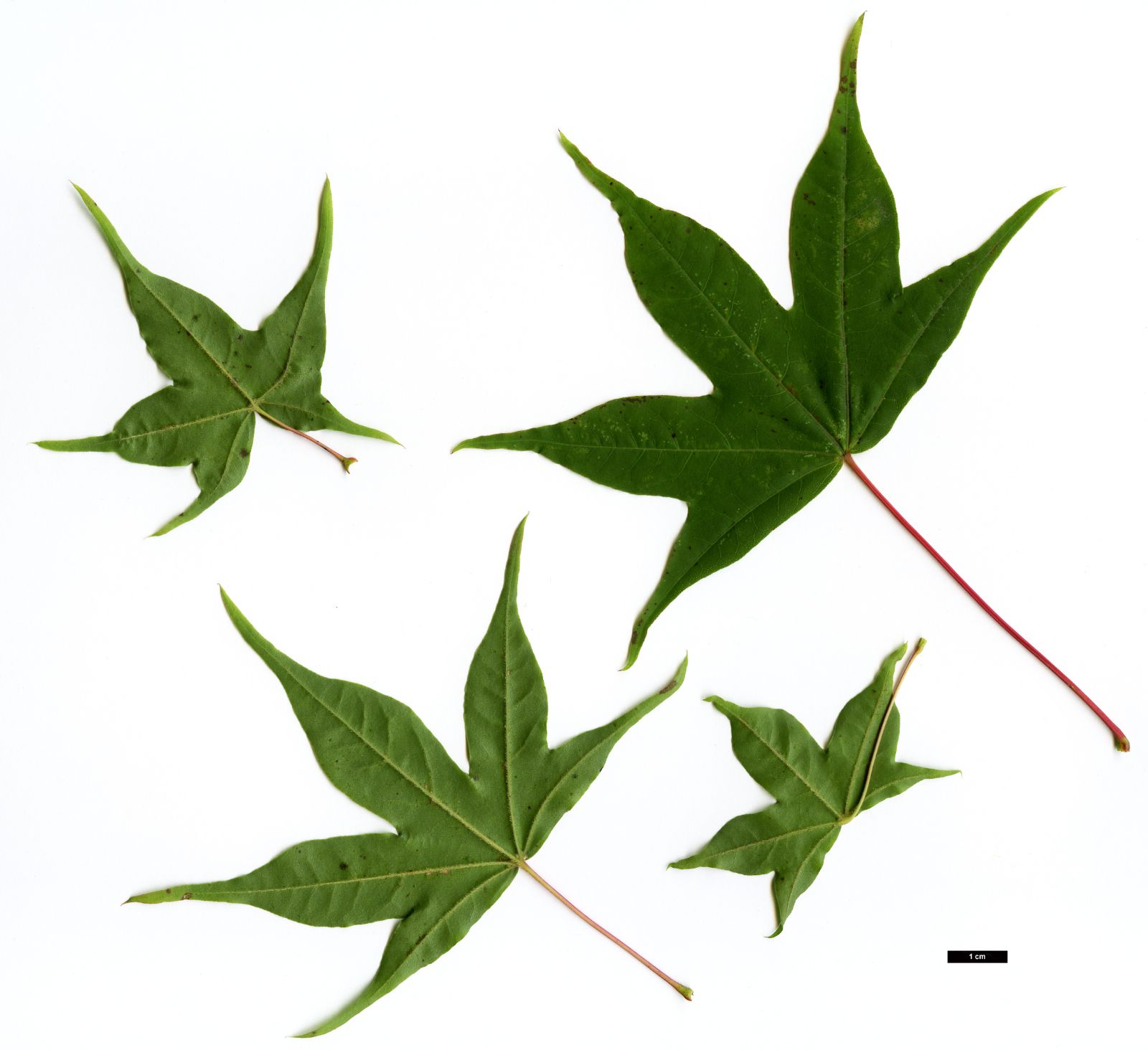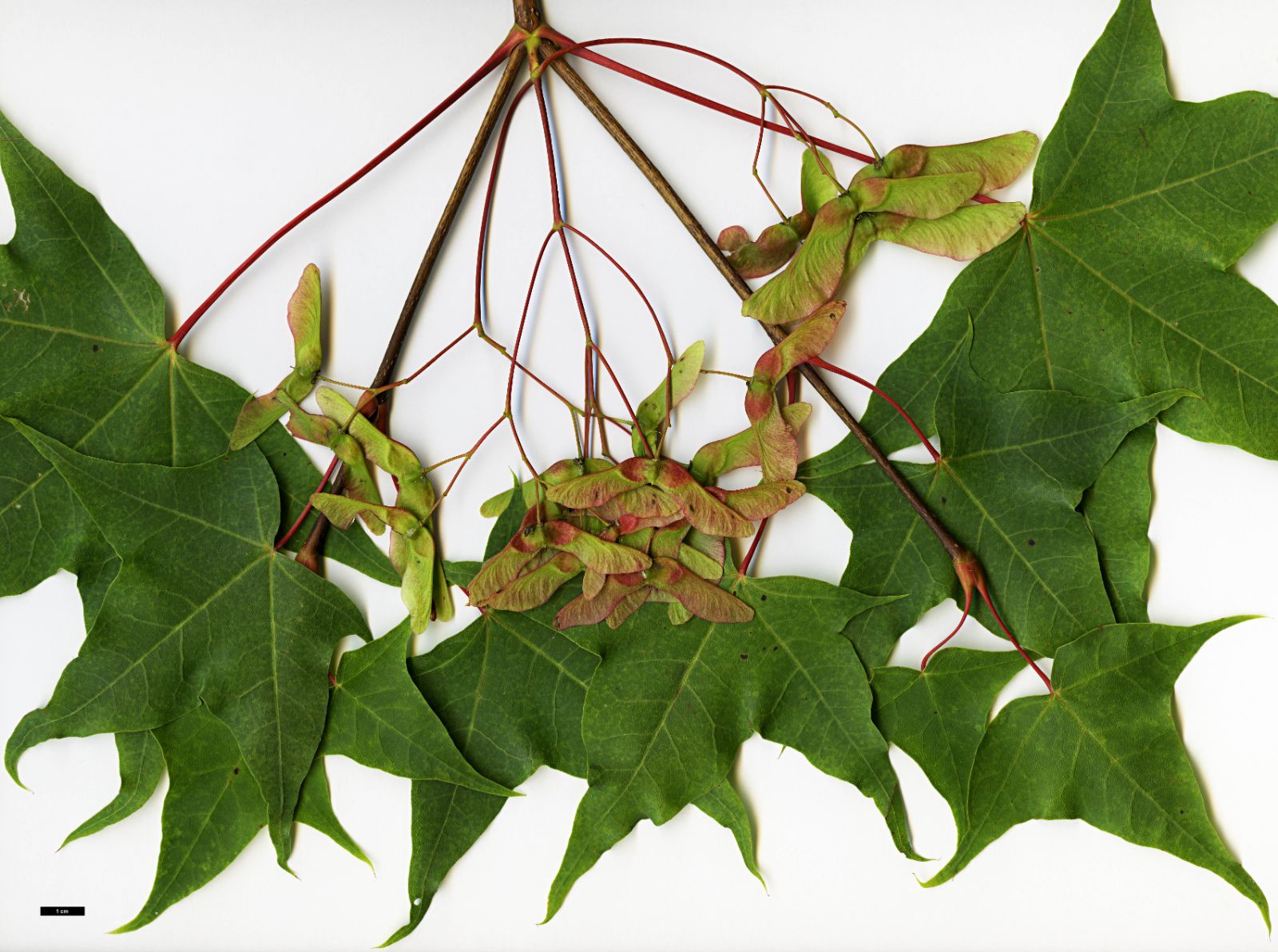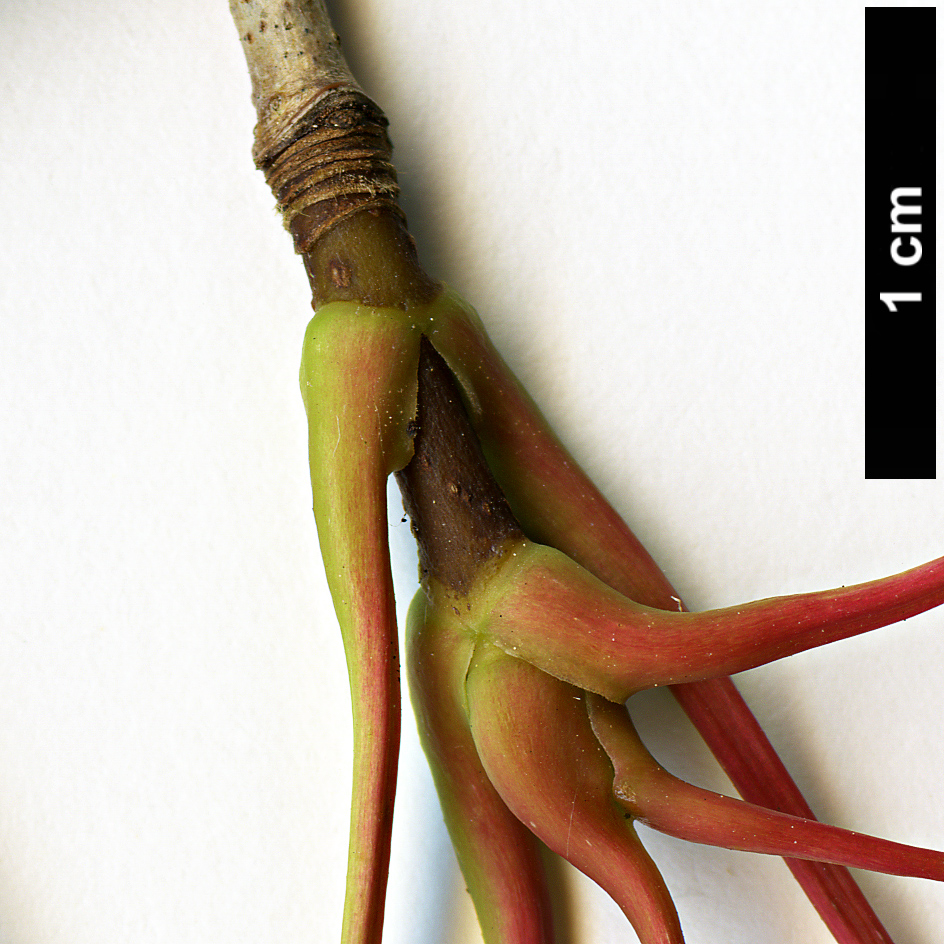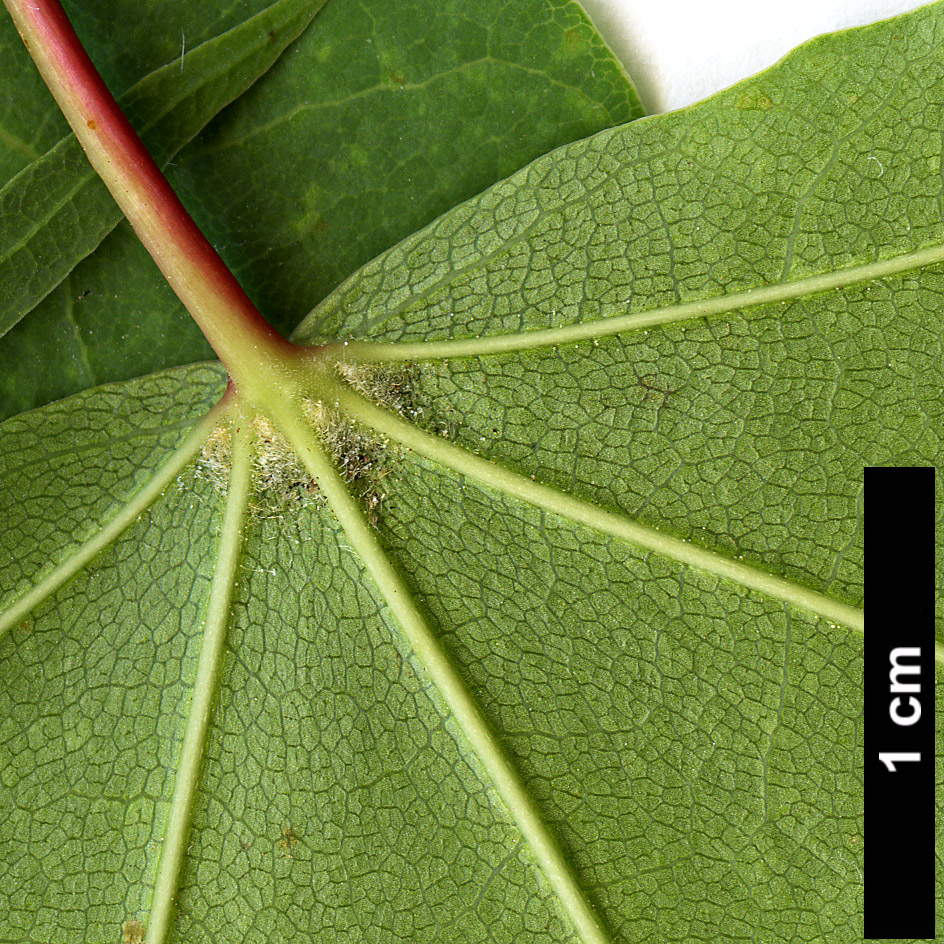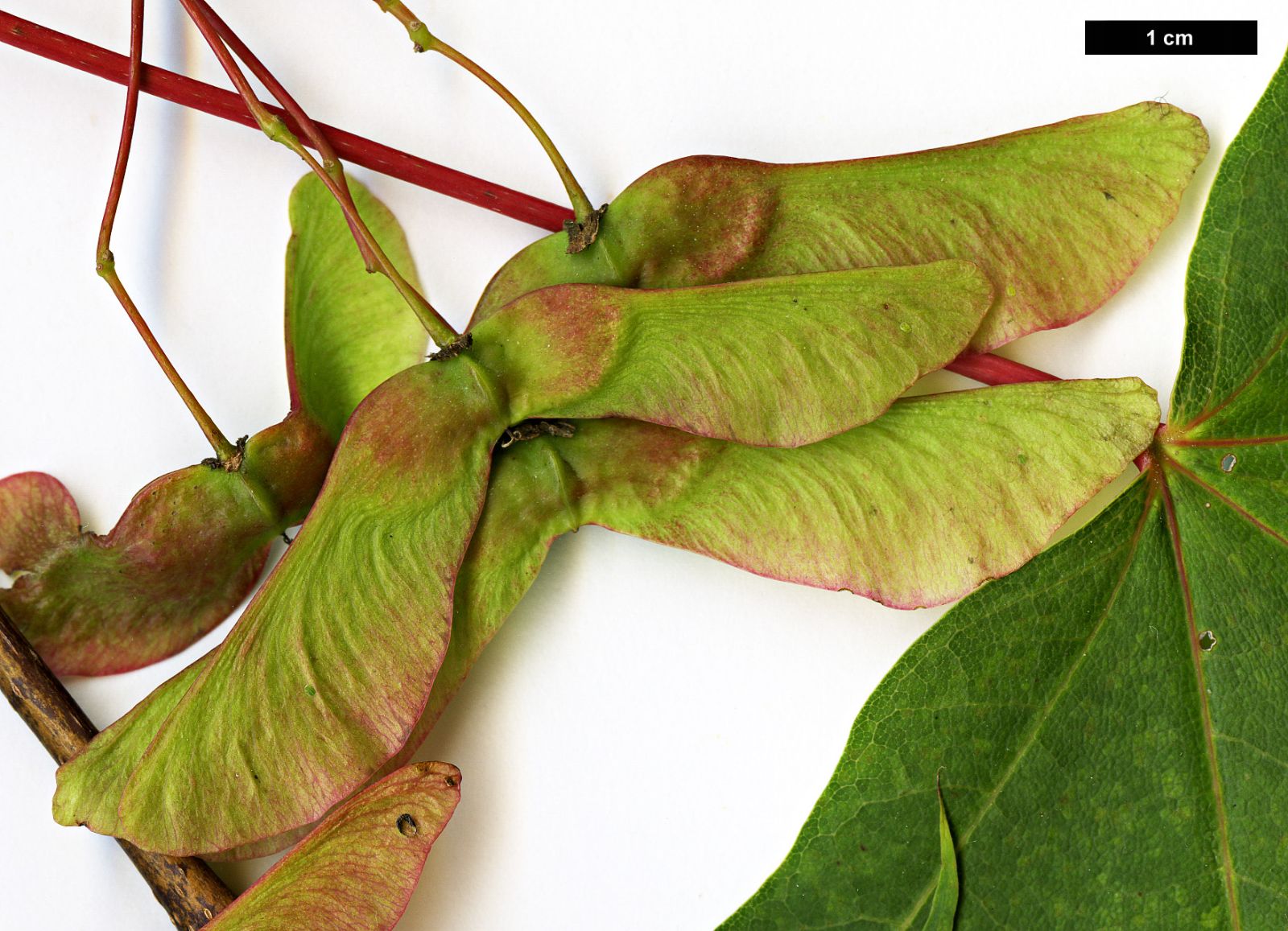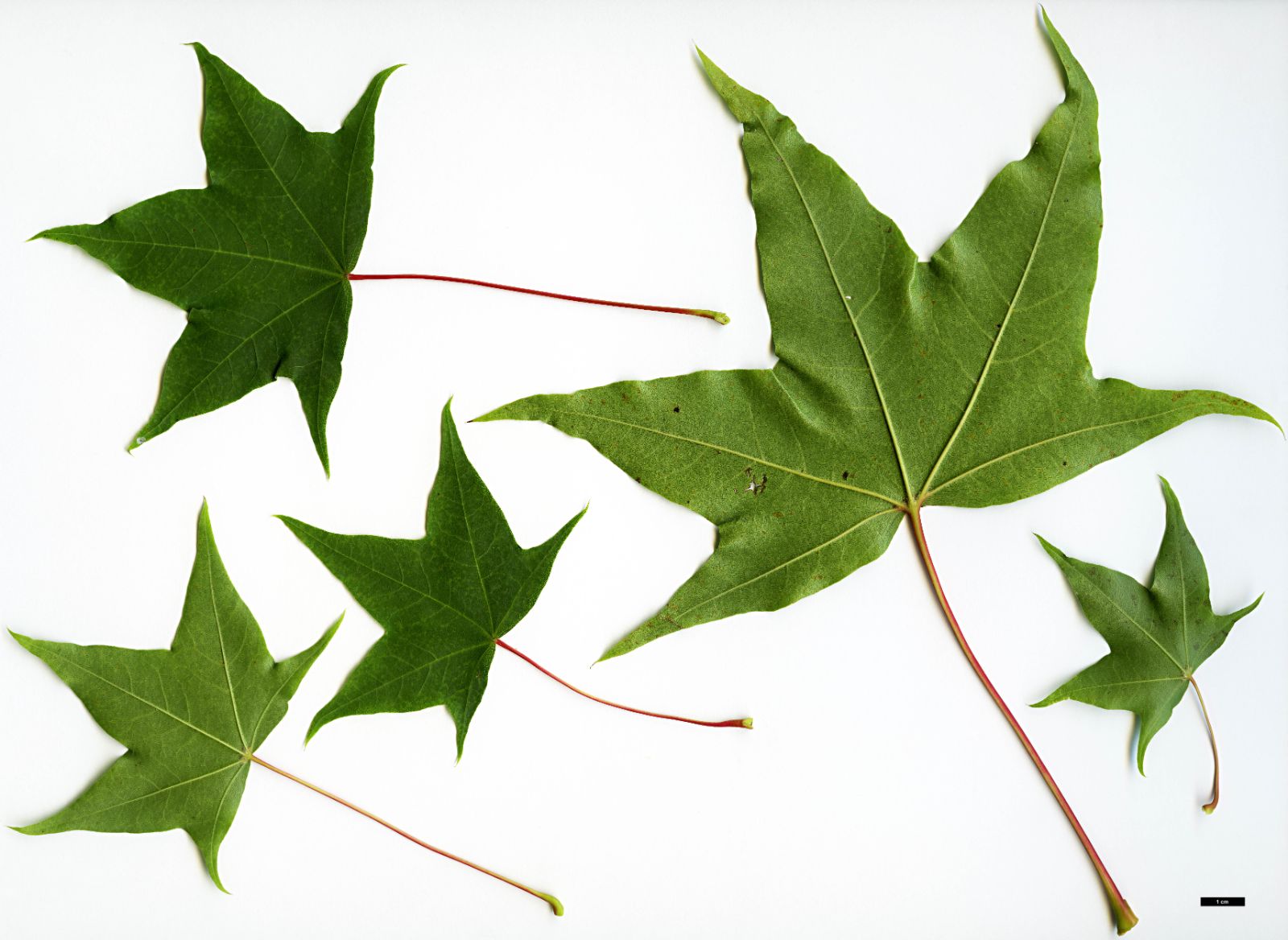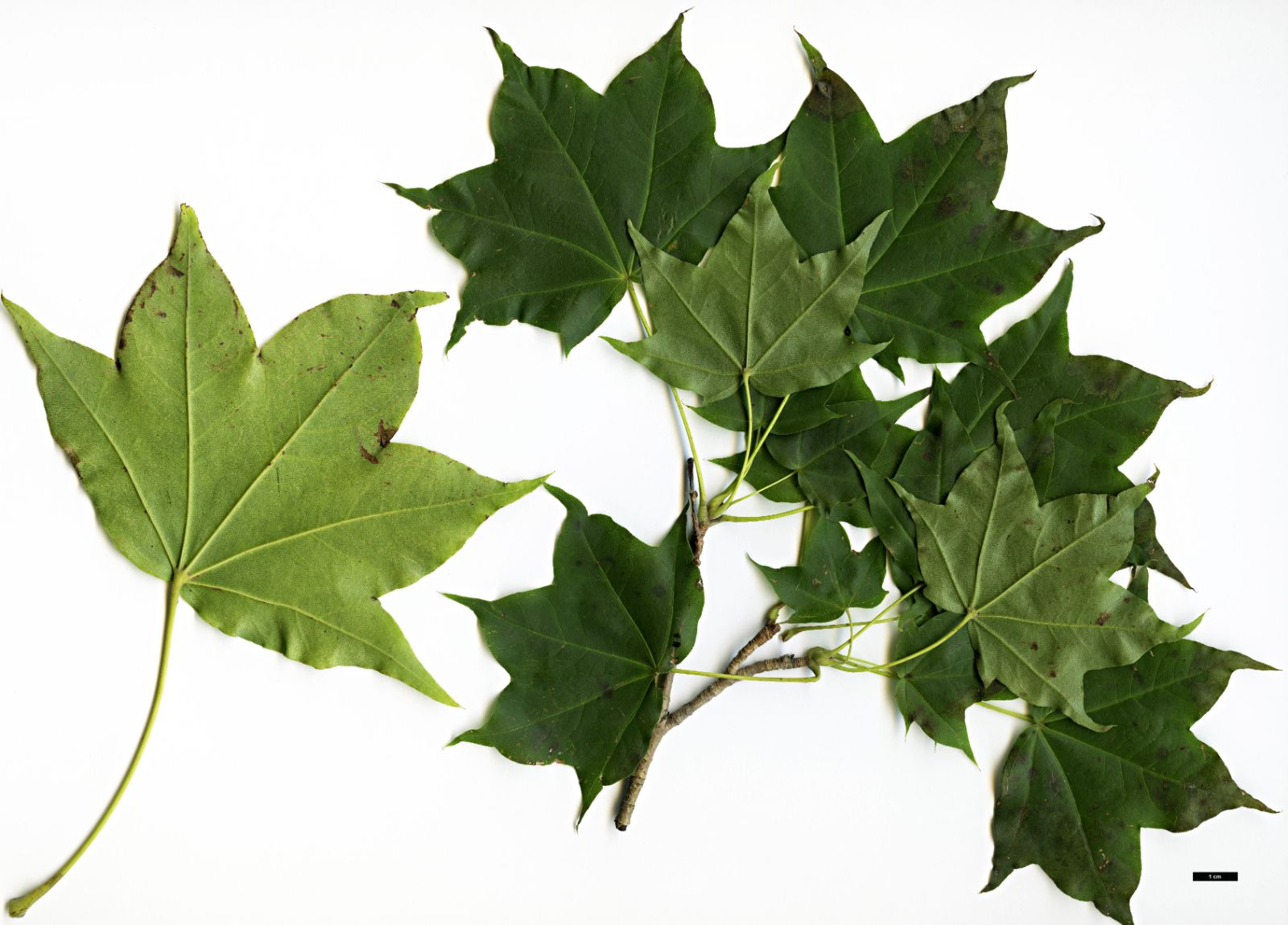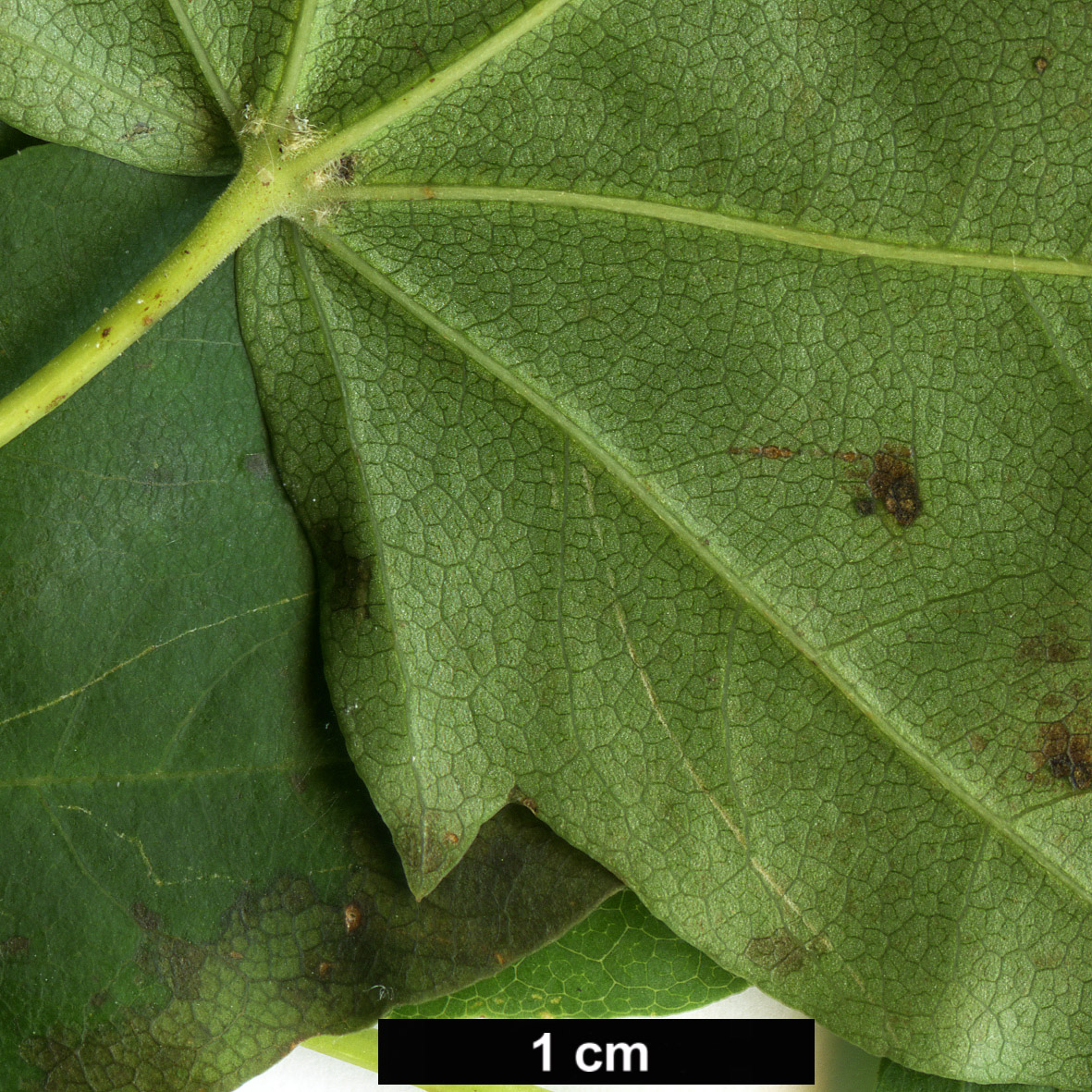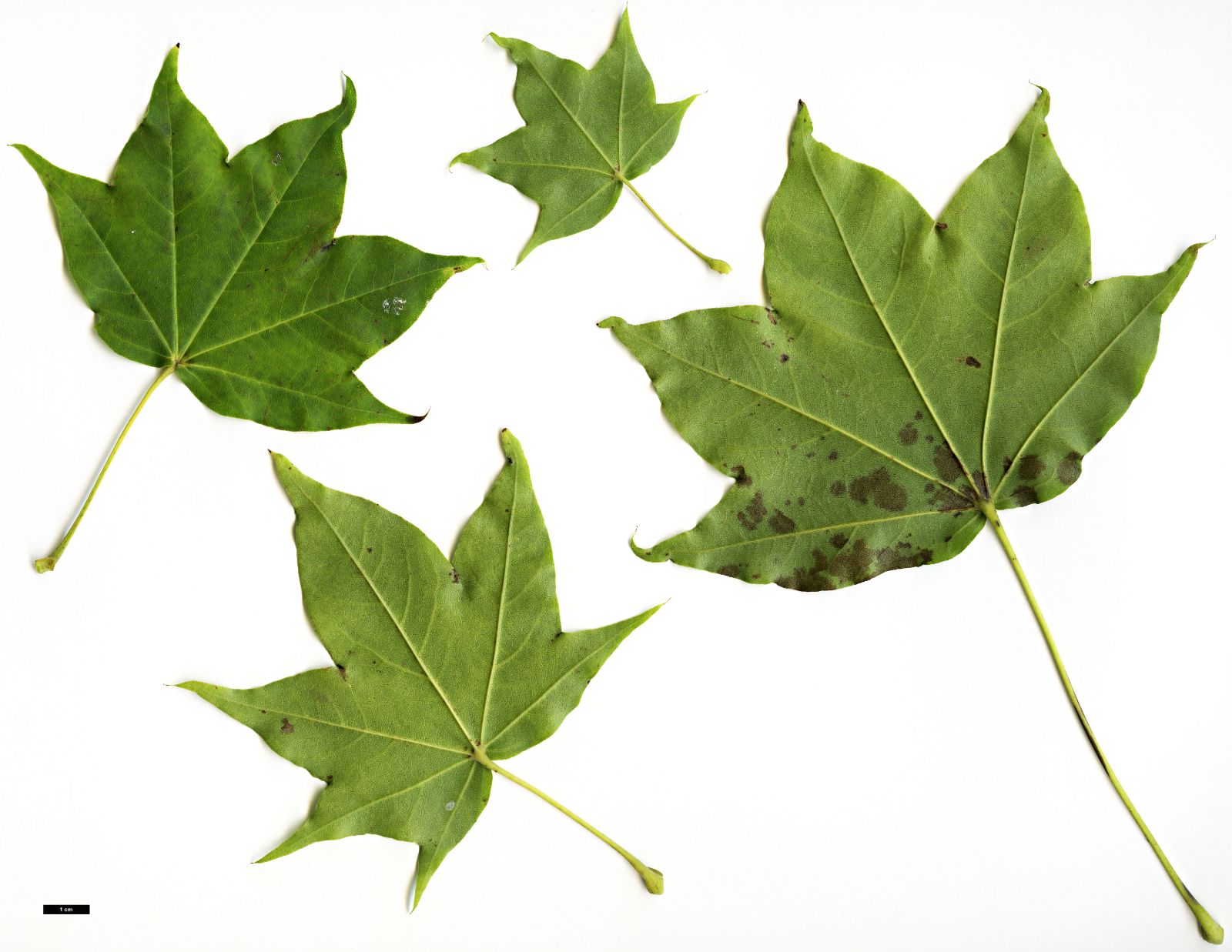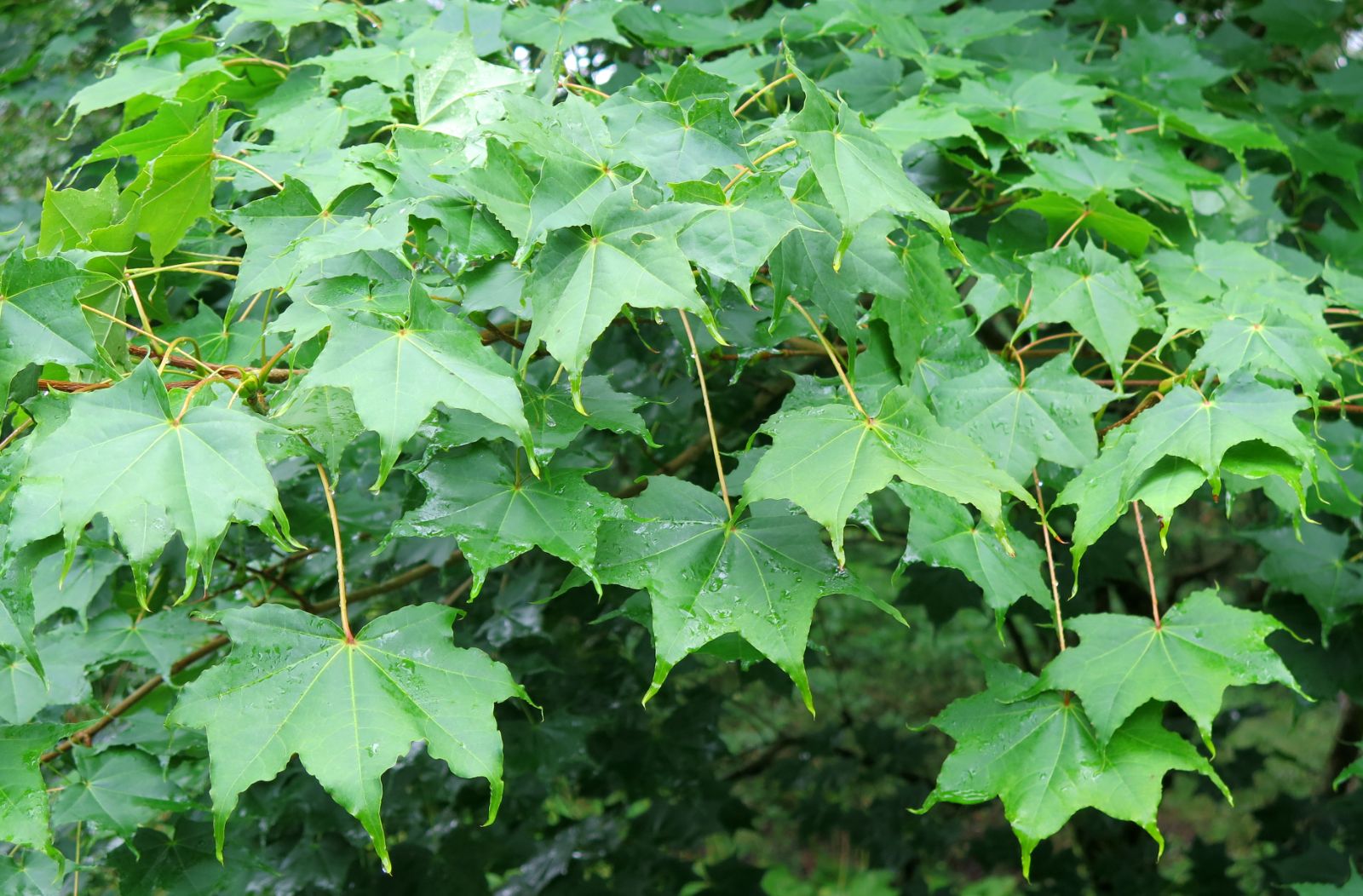Acer pictum
Sponsor
Kindly sponsored by
The Wynkcoombe Arboretum
Credits
Dan Crowley (2020)
Recommended citation
Crowley, D. (2020), 'Acer pictum' from the website Trees and Shrubs Online (treesandshrubsonline.
Infraspecifics
Other taxa in genus
- Acer acuminatum
- Acer amplum
- Acer argutum
- Acer barbinerve
- Acer buergerianum
- Acer caesium
- Acer calcaratum
- Acer campbellii
- Acer campestre
- Acer 'Candy Stripe'
- Acer capillipes
- Acer cappadocicum
- Acer carpinifolium
- Acer 'Cascade'
- Acer caudatum
- Acer ceriferum
- Acer chapaense
- Acer chienii
- Acer circinatum
- Acer cissifolium
- Acer × conspicuum
- Acer cordatum
- Acer coriaceifolium
- Acer × coriaceum
- Acer crataegifolium
- Acer davidii
- Acer diabolicum
- Acer distylum
- Acer divergens
- Acer duplicatoserratum
- Acer elegantulum
- Acer erianthum
- Acer 'Esk Flamingo'
- Acer fargesii
- Acer fenzelianum
- Acer flabellatum
- Acer forrestii
- Acer franchetii
- Acer × freemanii
- Acer fulvescens
- Acer 'Gimborn'
- Acer ginnala
- Acer glabrum
- Acer 'Gold Coin'
- Acer granatense
- Acer grandidentatum
- Acer griseum
- Acer heldreichii
- Acer henryi
- Acer × hillieri
- Acer hookeri
- Acer hyrcanum
- Acer japonicum
- Acer kawakamii
- Acer komarovii
- Acer laevigatum
- Acer laurinum
- Acer laxiflorum
- Acer lobelii
- Acer longipes
- Acer macrophyllum
- Acer mandshuricum
- Acer maximowiczianum
- Acer maximowiczii
- Acer metcalfii
- Acer miaotaiense
- Acer micranthum
- Acer 'Mindavi'
- Acer 'Minorient'
- Acer miyabei
- Acer miyabei × campestre
- Acer monspessulanum
- Acer morifolium
- Acer 'Mozart'
- Acer oblongum
- Acer obtusifolium
- Acer okamotoanum
- Acer oliverianum
- Acer opalus
- Acer orientale
- Acer palmatum
- Acer papilio
- Acer pauciflorum
- Acer pectinatum
- Acer pensylvanicum
- Acer pentaphyllum
- Acer pentapotamicum
- Acer pilosum
- Acer pinnatinervium
- Acer platanoides
- Acer platanoides × amplum
- Acer platanoides × truncatum
- Acer × pseudoheldreichii
- Acer pseudoplatanus
- Acer pseudosieboldianum
- Acer pubinerve
- Acer pycnanthum
- Acer rubescens
- Acer rubrum
- Acer rufinerve
- Acer saccharinum
- Acer saccharum
- Acer sempervirens
- Acer 'Serpentine'
- Acer serrulatum
- Acer shenkanense
- Acer sieboldianum
- Acer sikkimense
- Acer 'Silver Cardinal'
- Acer 'Silver Ghost'
- Acer sinense
- Acer sinopurpurascens
- Acer spicatum
- Acer stachyophyllum
- Acer taronense
- Acer tataricum
- Acer tegmentosum
- Acer tenellum
- Acer tetramerum
- Acer tibetense
- Acer tonkinense
- Acer triflorum
- Acer truncatum
- Acer tschonoskii
- Acer turkestanicum
- Acer tutcheri
- Acer ukurunduense
- Acer velutinum
- Acer wardii
- Acer 'White Tigress'
- Acer wilsonii
- Acer × zoeschense
A deciduous tree to 25 m in the wild. Bark pale brown to yellowish-grey. Branchlets glabrous, lenticillate, turning grey to brown and woody by the end of the first year. Buds ovoid, with 5 to 8 pairs of imbricate scales. Leaves pentagonal in outline, base subcordate to rounded, (3–)5 to 7(–9) lobed, (6–)7–13 × (6–)10–20 cm, margins entire, lobes triangular to ovate, apically acuminate, upper surface mid-green, lower surface pale green, glabrous or pubescent; petiole 4–20 cm long, slender, glabrous, exuding milky sap when broken; autumn colour yellow to red. Inflorescence terminal, corymbose-paniculate, glabrous, many flowered. Flowers red to yellowish-green, 5-merous, usually andromonoecious, sepals oblong, 0.2–0.8 cm long, petals elliptic to obovate, as long, or shorter, than sepals, stamens 8, inserted in the middle or on outside of the nectar disc. Samaras yellow to red, 3–3.5 cm long, wings spreading variously, nutlets flattened. Flowering from April to May, appearing before or with unfolding leaves, fruiting from September to October. (Krüssmann 1984; Ogata 1999; van Gelderen et al. 1994; Xu et al. 2008).
Distribution China Zhejiang, Yunnan, Xizang, Sichuan, Shanxi, Shaanxi, Nei Mongol, Anhui, Gansu, Hebei, Heilongjiang, Henan, Hubei, Hunan, Jiangsu, Jilin, Liaoning Japan North Korea South Korea Mongolia Russia Vietnam
Habitat Mixed temperate forests from zero to 3300 m asl.
USDA Hardiness Zone 5-6
RHS Hardiness Rating H6
Conservation status Least concern (LC)
Taxonomic note The name Acer pictum and its correct usage has been much debated and the complexity of the issue laid out by Wijnands in van Gelderen et al. (1994), who argued for the use of A. mono, a name based on Japanese material which has been much used in horticulture and botanical texts, including van Gelderen et al. (1994), largely on account of A. pictum being used as the basionym of Kalopanax pictus (now K. septemlobus), a member of the Araliaceae. However, when a formal proposal to reject the name A. pictum was made (Wijnands 1990), this was rejected seemingly on the basis that the name was not used widely and persistently enough to be rejected under the grounds on which the rejection was proposed, and the use of this name was endorsed (Brummitt 1993). A second proposal (van Rijckevorsel 2008) was also rejected because by this point the name A. pictum was widely used, including in several significant regional floras (Brummitt 2011). The Ullung-do endemic member of the complex is treated here as a distinct species, A. okamotoanum, but is often treated as a subspecies of Acer pictum, for example by Grimshaw & Bayton (2009). Given its similarity to Acer pictum, it is treated in the tentative key to the various subspecies of A. pictum currently known in gardens below. See the A. okamotoanum account for further discussion.
Relatively well-known and grown, Acer pictum was previously described by numerous authors, including Bean (1976a) and van Gelderen et al. (1994) as Acer mono (see taxonomic note for further details), a name it is often still found growing under. It may also be found growing under A. cappadocicum as the two can be similar in leaf but are easily separated by characters of the branchlets. In A. pictum (and relatives), these are brown by the end of the first growing season. In A. cappadocicum (and its relatives), these remain green and photosynthetic for several years. Various leaf forms are seen in A. pictum and several of the described lower taxa are represented in cultivation. Of the total of ten subspecies treated in respective floras of China and Japan (Ogata 1999; Xu et al. 2008), seven are recorded in collections (glaucum, pubigerum and tricuspis are those not noted as present). These include a number of wild-sourced introductions from both these countries, as well as Korea. In a widespread and complex group such as this it should come as no surprise that the identity of some of this material has been confused. Discussions pertaining to the correct identity of some recent introductions may be found in the various infraspecific accounts. As with many other species complexes within Acer, quite how the current classification of lower taxa will stand up to molecular study remains to be seen. Such a study would be most welcome!
Bean (1976a) states that the species was first introduced to Britain from Japan by Maries in 1881, and from China by Ernest Wilson in 1901, sometime after it had been introduced to Russia. The original introduction to Western cultivation is reportedly that of von Siebold, however, who introduced it to the Netherlands in 1860, while W.S. Bigelow sent material from Japan to the Arnold Arboretum, Boston, in 1891 (Jacobson 1996). Unsurprisingly, the species is somewhat variable in form as well as in leaf and while its autumn colour is usually yellow, it can occasionally be a good red. A young tree at the Morris Arboretum, Philadelphia, is notable in this regard. The species has also given rise to a number of cultivars, though it does not appear to have the popularity of some of its relatives in section Platanoidea.
Identification key | ||
| 1a. | Mature leaves with lower surfaces pubescent, pubescence not restricted to veins or axils | 2 |
| 1b. | Mature leaves with lower leaf surfaces glabrous, or pubescent only along veins or in axils | 3 |
| 2a. | Leaves with upper surfaces glabrous throughout | subsp. pictum |
| 2b. | Leaves with upper surfaces pubescent along primary veins | subsp. taishakuense |
| 3a | Leaves (three-) five (seven)-lobed | 4 |
| 3b. | Leaves (five-) seven to nine-lobed | 6 |
| 4a. | Lobes dissected to more than halfway | subsp. dissectum |
| 4b. | Lobes dissected to less than halfway | 5 |
| 5a. | Fruits spreading horizontally, or nearly so | subsp. macropterum |
| 5b. | Fruits spreading obtusely, or to a 90° angle | subsp. mayrii |
| 6a. | Leaves five to seven -lobed, with lower surface glabrous or pubescent along veins | subsp. mono |
| 6b. | Leaves seven to nine -lobed, lower surface with pubescence only in basal vein axils | 7 |
| 7a. | Leaf base shallowly to deeply cordate, fruit with wing 2–3 cm long | subsp. savatieri |
| 7b. | Leaf base subcordate to truncate, fruit with wings 3.5–4.5 cm long | Acer okamotoanum |
'Hoshi yadori'
RHS Hardiness Rating: H6
A shrub or small tree to 6 m tall, Acer pictum ‘Hoshi yadori’ has leaves speckled with yellow, though it is prone to reversion. Of Japanese origin, it is represented in Europe and North America at collections in including the Dawes Arboretum, Ohio (American Public Gardens Association 2017) and Arboretum Wespelaar, Belgium (Arboretum Wespelaar 2018).
subsp. dissectum (Wesm.) H. Ohashi
Synonyms
Acer pictum var. dissectum Wesm.
Acer mono var. marmoratum (G. Nicholson) H. Hara
Subsp. dissectum has 5– to 7-lobed leaves, with rounded to cordate bases, that are deeply lobed. The samaras are 2–2.5 cm long with wings spreading acutely. (Xu et al. 2008). f. connivens (G. Nicholson) H. Ohashi has veins that are villose on the lower surface. (Ogata 1999).
Distribution
- Japan – Honshu, Shikoku, Kyushu
RHS Hardiness Rating: H6
USDA Hardiness Zone: 5-7
Infrequent in collections but easily distinguishable on account of its deeply dissected lobes, subsp. dissectum is represented by SOKU 36, which grows at RBG Kew. BCJMM 176, collected from Gumma Prefecture on Honshu in 2007 belongs to subsp. savatieri rather than subsp. dissectum f. connivens, as it is found in some collections.
subsp. macropterum (W.P. Fang) H. Ohashi
Subsp. macropterum has 3– to 5-lobed leaves with truncate bases that are pubescent or not beneath. The samaras are 3–4 cm long with wings spreading horizontally. (Xu et al. 2008).
Distribution
- China – southeast Gansu, western Sichuan, southeast Xizang, Yunnan.
RHS Hardiness Rating: H4
USDA Hardiness Zone: 6-7
The identities of representatives of subsp. macropterum have been somewhat confused in collections. It is known in cultivation from two collections, SICH 1814, collected in Nanjiang County, Sichuan in 1996 and SICH 2087, also collected in Nanjiang County, in 1999. Both have been found in collections under names A. cappadocicum subsp. sinicum and A. longipes, while SICH 1814 may also be found as A. truncatum. This collection grows well at Wakehurst, West Sussex and at Westonbirt Arboretum, Gloucestershire, where it has made attactive trees with rounded crowns. Interesting variation has been found within seedlings of SICH 2087, with some, though far from all specimens, taking a fastigiate form. Examples with such form grow at Hergest Croft, Herefordshire and RBG Kew. In both examples, red developing fruits contrast very satisfactorily with the green foliage.
Similar in leaf form to A. truncatum, A. pictum subsp. macropterum can be distinguished from that species in its fruits with wings more than twice as long as the nutlet. A collection of A. pictum from Seo My Ty, northern Vietnam, made by Dan Hinkley in 2006 under DJHV 06144 appears, in leaf and flower, closest to this subspecies. This collection represents an extension of the range of A. pictum, not previously recorded from Vietnam, though the habitat in which this collection was made has since been destroyed (D. Crowley, pers. obs 2017). Though recorded as A. pictum subsp. macropterum by Grimshaw & Bayton (2009), SICH 1107 belongs to A. cappadocicum subsp. sinicum rather than to this taxon.
subsp. mayrii (Schwer.) H. Ohashi
Synonyms
Acer mayrii Schwer.
Acer pictum Thumb. var mayrii (Schwer.) A. Henry
Acer mono Maxim. var. mayrii (Schwer.) Koidz ex Nemoto
Acer mono Maxim. subsp. mayrii (Schwer.) Kitam. et Murata
Subsp. mayrii has (3–)5(–9) -lobed leaves, with rounded to cordate bases, that are glabrous beneath. The samaras are 3–4 cm long with wings spreading to 90°. (Ogata 1999).
Distribution
- Japan – Hokkaido, Honshu
RHS Hardiness Rating: H5
USDA Hardiness Zone: 5-7
Plants grown as this subspecies are only rarely observed in collections. Examples from two accessions, both collected on Honshu, are represented at Benmore Botanic Garden: EJE 130, collected in 2003, and ESJE 292, collected in 2006 (Royal Botanic Garden Edinburgh 2018).
subsp. mono (Maximowicz) H. Ohashi
Synonyms
Acer mono Maximowicz
Acer mono var. glabrum (H. Lev. et Vanoit) H. Hara
Acer cappadocicum Gled. subsp. mono (Maximowicz) A.E. Murray
Acer laetum C.A. Meyer var. parviflorum Regel
Acer mono subsp. incurvatum (W.P. Fang & P.L. Chiu) T.Z. Hsu
Acer mono var. incurvatum W.P. Fang & P.L. Chiu
Acer mono f. septemlobum W.P. Fang & T.P. Soong
Acer pictum subsp. incurvatum (W.P. Fang & P.L. Chiu) H. Ohashi
Acer pictum var. mono (Maximowicz) Franchet
Acer pictum var. parviflorum (Regel) Schneider
Acer truncatum Bunge subsp. mono (Maximowicz) A.E. Murray
Subsp. mono has pubescent branchlets and petiole bases, and 5– to 7-lobed leaves that are pilose along main veins beneath. The samaras are 3–3.5 cm long with wings spreading variously. (Ogata 1999; Xu et al. 2008).
Distribution
- China – Anhui, Gansu, Hebei, Heilongjiang, Henan, Hubei, Hunan, Jiangsu, Jilin, Liaoning, Nei Mongol, Shaanxi, Shanxi, Sichuan, Yunnan, Zhejiang
- Japan – southern Kuriles, Hokkaido, Honshu
- South Korea
- Mongolia
- Russia
RHS Hardiness Rating: H6
USDA Hardiness Zone: 5-7
Acer pictum subsp. mono is recorded in several collections in both Europe and North America from collections made in China and Japan. NACPEC 97–049, collected in 1997 in Chang Bai County, Jilin, grows at collections including the Arnold Arboretum, Boston, and the Morris Arboretum, Philadelphia, while QLG 010 and 250, collected in the Qinling Mountains in 1996, is represented at the Morris Arboretum, the United States National Arboretum, and elsewhere (American Public Gardens Association 2017). EHOK 178, collected on Hokkaido in 2007 grows at RBG Kew and the Yorkshire Arboretum in the United Kingdom as well as at the United States National Arboretum in Washington D.C. The oldest material of known origin in collections appears to be that of Wilson 310, an original of which grows at Dawyck Botanic Garden, Scotland, with repropagated material represented at RBG Kew.
subsp. pictum
Synonyms
Acer ambiguum Dippel
Acer mono subsp. ambiguum (Pax) Kitam. et Murata
Acer mono var. ambiguum (Pax) Rehder
Acer pictum var. ambiguum (Dippel) Pax
Subsp. pictum has 5– to 7-lobed leaves that are covered in velvety hairs beneath. The samaras are ~2.5 cm long and spread at acute to right angles (Ogata 1999; Xu et al. 2008).
Distribution
- Japan – southern Hokkaido, Honshu, Shikoku, Kyushu
RHS Hardiness Rating: H6
USDA Hardiness Zone: 5-7
Plants recorded as the typical subspecies appear relatively infrequently in collections, though WJAP 50, collected in 2011 in the Chichibu University Forest of the University of Tokyo, fits here. Examples grow at Wakehurst, West Sussex, and at Westonbirt Arboretum, Gloucestershire.
subsp. savatieri (Pax) H. Ohashi
Synonyms
Acer pictum Thunb. var. savatieri Pax
Acer mono Maxim. var. trichobasis Nakai
Acer mono Maxim. subsp. savatieri (Pax) Kitam. et Murata
Subsp. savatieri has (5–)7– to 9-lobed leaves, with cordate bases, that are pubescent in basal axils beneath. The samaras are 2–3 cm long with wings spreading variously (Ogata 1999).
Distribution
- Japan – Central Honshu, Shikoku
RHS Hardiness Rating: H5
USDA Hardiness Zone: 5-7
Like Acer pictum subsp. pictum, subsp. savatieri is rarely recorded in collections, though collections of this were also made by Westonbirt Arboretum in 2011, under WJAP 31, though as A. pictum var. trichobasis (a combination seemingly never published ). Plants growing at Westonbirt have proved vigorous in youth, while the collection is also grown at Wakehurst, West Sussex. BCJMM 176, collected in Gumma Prefecture, Honshu in 2007 also fits here, rather than to subsp. dissectum f. connivens (seemingly collected as A. pictum f. connivens).
subsp. taishakuense (K. Ogata) H. Ohashi
Synonyms
Acer mono Maxim subsp. taishakuense (K. Ogata) Kitam. et Murata
Subsp. taishakuense has 5(–7) -lobed leaves, with truncate to shallowly cordate bases, that are pubescent along veins above and throughout beneath. The samaras are 2 cm long with wings spreading to 90°. (Ogata 1999).
Distribution
- Japan – Honshu
RHS Hardiness Rating: H5
USDA Hardiness Zone: 5-7
Examples grown from seed collected as this subspecies, under f. heterophyllum, a taxon not listed at all by Ogata (1999), grow at RBG Edinburgh, Benmore and Murthly Castle (Royal Botanic Garden Edinburgh 2018). The collection was made in Niigata Prefecture in 2005 under BCJMMT 133.
'Tokiwa nishiki'
RHS Hardiness Rating: H6
A shrubby plant of Japanese origin, Acer pictum ‘Tokiwa nishiki’ has leaves in part, or entirely off-white. Rare in Europe and North America according to van Gelderen & van Gelderen (1999).
'Usugumo'
RHS Hardiness Rating: H6
With leaves pinkish-salmon or paler, van Gelderen & van Gelderen (1999, p. 208) describe Acer pictum ‘Usugumo’ as ‘a gem but difficult to propagate and grow’. Also more common in Japan than Western cultivation, it is represented at a number of North American collections including Atlanta Botanical Garden, the Dawes Arboretum, Ohio and the United States National Arboretum (American Public Gardens Association 2017).

